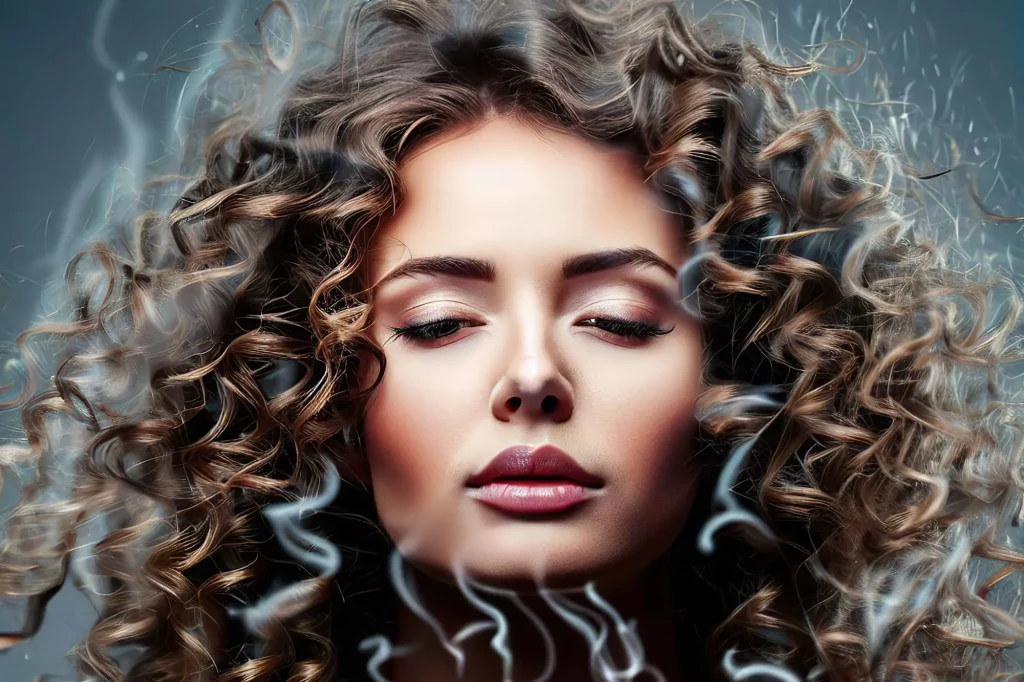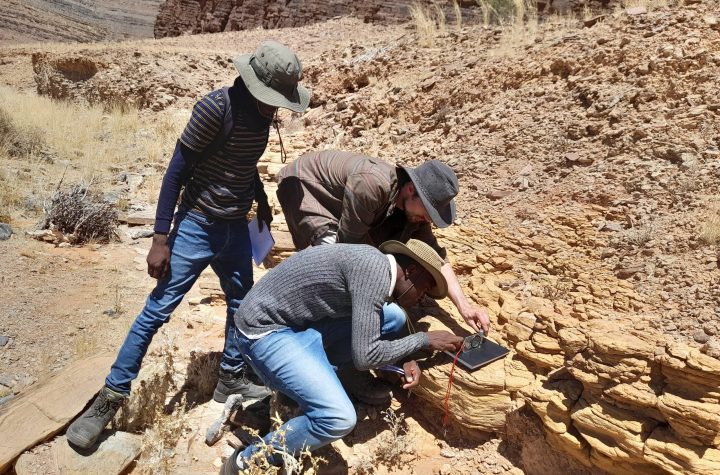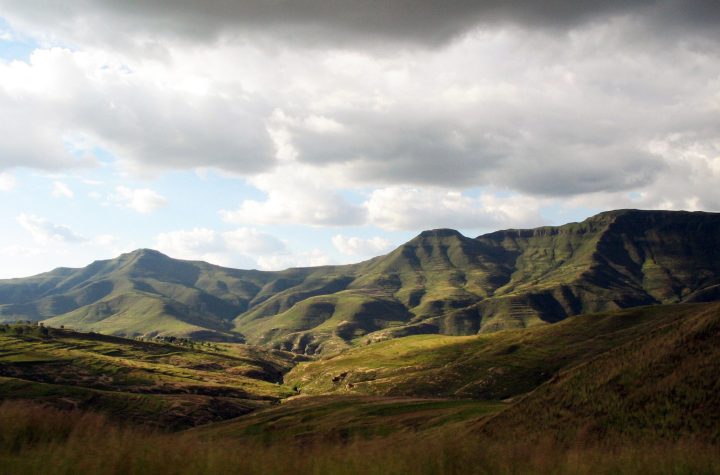Para peneliti berpendapat bahwa evolusi rambut keriting pada manusia purba adalah fitur adaptif yang penting di Afrika khatulistiwa, memberikan perlindungan yang efektif dari panas matahari dan mengurangi kebutuhan untuk berkeringat. Mekanisme pendinginan pasif ini memungkinkan perkembangan otak dengan menghemat air dan mengurangi panas. Studi ini memberikan wawasan baru tentang peran evolusi jaringan rambut.
Rambut kulit kepala yang sangat keriting melindungi manusia purba dari pancaran panas matahari, memungkinkan otak mereka tumbuh dengan ukuran yang mirip dengan manusia modern.
Rambut keriting terlihat lebih dari sekadar ketampanan — ini mungkin menjelaskan bagaimana manusia purba tetap dingin sambil menjaga hidrasi, menurut para peneliti yang telah mempelajari peran tekstur rambut manusia dalam mengatur suhu tubuh. Temuan ini dapat menjelaskan adaptasi evolusioner yang memungkinkan otak manusia tumbuh hingga ukuran modern.
“Manusia berevolusi di Afrika ekuator, tempat matahari berada di atas kepala hampir sepanjang hari, tahun demi tahun, tahun demi tahun,” kata Nina Jablonski, seorang profesor antropologi di Pennsylvania State University. Di sini kulit kepala dan bagian atas kepala menerima tingkat radiasi matahari intens yang jauh lebih konstan dalam bentuk panas. Kami ingin memahami bagaimana hal ini memengaruhi evolusi rambut kami. Kami menemukan bahwa rambut yang ikal rapat memungkinkan manusia untuk tetap tenang dan benar-benar menjaga hidrasi.”

Manikin termal mengenakan wig rambut manusia yang keriting (kiri) dan lurus (kanan). Troll menggunakan energi listrik untuk mensimulasikan panas tubuh dan memungkinkan para ilmuwan mempelajari perpindahan panas antara kulit manusia dan lingkungan. Sebuah studi baru yang melihat peran tekstur rambut manusia dalam mengatur suhu tubuh menemukan bahwa rambut keriting yang rapat memberikan perlindungan terbaik dari pancaran panas matahari sekaligus mengurangi kebutuhan untuk berkeringat agar tetap dingin. Kredit: George Haveneth, Universitas Loughborough
Para peneliti menggunakan manekin termal – model berbentuk manusia yang menggunakan energi listrik untuk mensimulasikan panas tubuh dan memungkinkan para ilmuwan untuk mempelajari perpindahan panas antara kulit manusia dan lingkungan – dan wig rambut manusia untuk memeriksa bagaimana berbagai tekstur rambut mempengaruhi perolehan panas dari sinar matahari. energi. radiasi. Para ilmuwan memprogram kurcaci untuk mempertahankan suhu permukaan konstan 95 derajat[{” attribute=””>Fahrenheit (35 degrees Celsius), similar to the average surface temperature of skin, and set it in a climate-controlled wind tunnel.
The team took base measurements of body heat loss by monitoring the amount of electricity required by the manikin to maintain a constant temperature. Then they shined lamps on the manikin’s head to mimic solar radiation under four scalp hair conditions — none, straight, moderately curled, and tightly curled.
The scientists calculated the difference in total heat loss between the lamp measurements and the base measurements to determine the influx of solar radiation to the head, explained George Havenith, director of the Environmental Ergonomics Research Centre at Loughborough University, U.K., who led the manikin experiments. They also calculated heat loss at different windspeeds and after wetting the scalp to simulate sweating. They ran their results through a model to study how the diverse hair textures would affect heat gain in 86-degree Fahrenheit (30 degrees Celsius) heat and 60% relative humidity, like environments in equatorial Africa.
The researchers found that all hair reduced solar radiation to the scalp, but tightly curled hair provided the best protection from the sun’s radiative heat while minimizing the need to sweat to stay cool. They reported their findings on June 6, 2023, in the Proceedings of the National Academy of Sciences.

A graphic showing how scientists used a thermal manikin and human hair wigs to measure heat transfer from the scalp. Credit: Melisa Morales Garcia
“Walking upright is the setup and brain growth is the payoff of scalp hair,” said Tina Lasisi, who conducted the study as part of her doctoral dissertation at Penn State. Lasisi will start as an assistant professor of anthropology at the University of Michigan in the fall.
As early humans evolved to walk upright in equatorial Africa, the tops of their heads increasingly took the brunt of solar radiation, explained Lasisi. The brain is sensitive to heat, and it generates heat, especially the larger it grows. Too much heat can lead to dangerous conditions like heat stroke. As humans lost much of their body hair, they developed efficient sweat glands to keep cool, but sweating comes at a cost in lost water and electrolytes. Scalp hair likely evolved as a way to reduce the amount of heat gain from solar radiation, thereby keeping humans cool without the body having to expend extra resources, said Lasisi.
“Around 2 million years ago we see Homo erectus, which had the same physical build as us but a smaller brain size,” she said. “And by 1 million years ago, we’re basically at modern-day brain sizes, give or take. Something released a physical constraint that allowed our brains to grow. We think scalp hair provided a passive mechanism to reduce the amount of heat gained from solar radiation that our sweat glands couldn’t.”
The multidisciplinary research provides important preliminary results for bettering our understanding of how human hair evolved without putting humans in potentially dangerous situations, said Jablonski.
The study also shows that evolutionary anthropologists have an extra tool in the thermal manikin – normally used for testing the functionality of protective clothing – for quantifying human data that is otherwise very difficult to capture, added Havenith.
“The work that’s been done on skin color and how melanin protects us from solar radiation can shape some of the decisions that a person makes in terms of the amount of sunscreen needed in certain environments,” said Lasisi. “I imagine that similar decision-making can occur with hair. When you think about the military or different athletes exercising in diverse environments, our findings give you a moment to reflect and think: is this hairstyle going to make me overheat more easily? Is this the way that I should optimally wear my hair?”
Reference: “Human scalp hair as a thermoregulatory adaptation” by Tina Lasisi, James W. Smallcombe, W. Larry Kenney, Mark D. Shriver, Benjamin Zydney, Nina G. Jablonski and George Havenith, 6 June 2023, Proceedings of the National Academy of Sciences.
DOI: 10.1073/pnas.2301760120
Also contributing to the research were James Smallcombe, Loughborough University and the University of Australia; and from Penn State Larry Kenney, professor of physiology, kinesiology and Marie Underhill Noll Chair in Human Performance; Mark Shriver, professor of anthropology; and Benjamin Zydney, previously an undergraduate research assistant and now a Penn State alum.
The National Science Foundation and the Wenner-Gren Foundation supported this work.

“Kutu buku musik lepas. Pecandu internet bersertifikat. Pencinta perjalanan. Penyelenggara hardcore. “











More Stories
Makanan cepat saji dan daging olahan mungkin menjadi penyebab kanker di kalangan anak muda: dokter
Kapan peluncurannya? Bisakah saya melihatnya di New Smirna?
Sebuah studi baru memetakan awal mula kehidupan hewan